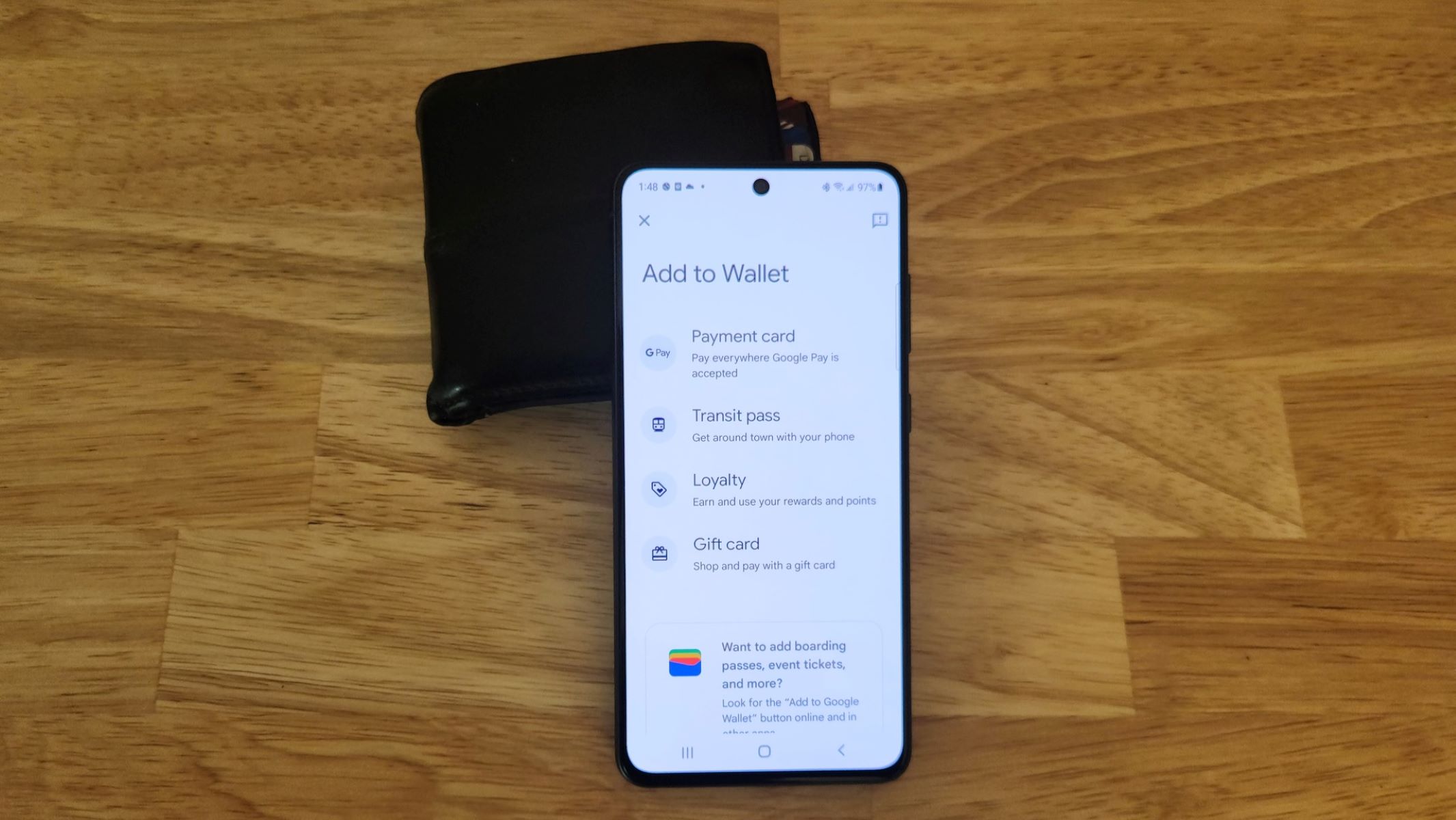

Finance
What Is Google Temporary Hold On Credit Card
Published: October 26, 2023
Find out what Google's temporary hold on credit cards means for your finances. Stay informed and understand the impact it may have on your credit card transactions.
(Many of the links in this article redirect to a specific reviewed product. Your purchase of these products through affiliate links helps to generate commission for LiveWell, at no extra cost. Learn more)
Table of Contents
- Introduction
- Understanding Google’s Temporary Hold on Credit Cards
- Why Does Google Place Temporary Holds on Credit Cards?
- How Does Google’s Temporary Hold on Credit Cards Work?
- Implications of Google’s Temporary Hold on Credit Cards
- How to Deal with Google’s Temporary Hold on Credit Cards
- Tips to Prevent Issues with Google’s Temporary Hold on Credit Cards
- Conclusion
Introduction
Google is undoubtedly one of the most powerful and influential companies in the world, and its reach extends into many aspects of our daily lives. In addition to its widely-used search engine and suite of productivity tools, Google also offers various advertising and marketing services to businesses.
One such service is the ability to run ads and collect payments through Google Ads. For businesses using this platform, it is essential to understand a feature that Google implemented known as the “temporary hold” on credit cards.
The temporary hold is a predetermined period during which Google places a hold on a credit card used for advertising on its platform. This hold ensures that there are sufficient funds to cover the ad expenses and helps protect both Google and advertisers from potential fraudulent activities.
While the temporary hold is a standard practice in the advertising industry, it can sometimes cause confusion or concerns for advertisers who are not familiar with the process. In this article, we will delve into the details of Google’s temporary hold on credit cards, why it is in place, how it works, and how to navigate any potential issues that may arise.
Understanding Google’s Temporary Hold on Credit Cards
Google’s temporary hold on credit cards is a precautionary measure implemented to ensure the validity of the credit card information provided by advertisers using Google Ads. When an advertiser sets up an ad campaign and links it to their credit card, Google places a temporary hold on the card for a specified amount.
This temporary hold serves two main purposes. Firstly, it confirms that the credit card is active and has sufficient funds to cover the advertising expenses. Secondly, it helps protect both Google and the advertiser from potential fraudulent activities, such as using stolen credit card information to run ads.
It is important to note that the temporary hold is not an actual charge or payment, but rather a pre-authorization. The pre-authorization verifies the card’s validity and the availability of funds, and it typically lasts for a short period, usually a few days.
During the temporary hold period, the amount placed on hold is unavailable for the advertiser to use. However, it does not affect the overall available credit or impact any existing charges or payments on the card. Once the period expires, the hold is released, and the funds become available again.
While the temporary hold may seem inconvenient for advertisers, especially those with limited credit, it is a necessary measure to maintain the integrity of the advertising platform and ensure payments are legitimate.
Next, we will explore why Google puts temporary holds on credit cards and the reasons behind this implementation.
Why Does Google Place Temporary Holds on Credit Cards?
Google places temporary holds on credit cards used for advertising on its platform for several reasons. These reasons primarily revolve around ensuring the authenticity of the credit card information provided by advertisers and preventing potential fraudulent activities.
1. Verification of Card Validity: By placing a temporary hold on a credit card, Google can verify that the card is active and valid. This allows Google to confirm the legitimacy of the advertiser and ensures that there are no issues with the provided payment method.
2. Confirmation of Sufficient Funds: The temporary hold also ensures that the credit card has sufficient funds to cover the advertising expenses. This minimizes the risk of running ads that may not be paid for in the future, protecting both Google and the advertiser.
3. Prevention of Fraudulent Activities: One of the key reasons for implementing temporary holds is to prevent fraud. By placing a hold on the credit card, Google can verify that the advertiser is using legitimate payment information and actively mitigate the risk of unauthorized use or stolen credit cards.
4. Advertiser Protection: Temporary holds help safeguard advertisers from potential financial losses due to fraudulent activities. By ensuring that valid payment information is used, advertisers can have peace of mind knowing that their advertising expenses are protected.
5. Platform Integrity: Google Ads is a widely used and trusted advertising platform with billions of dollars flowing through its system. By implementing temporary holds, Google can maintain the integrity of its platform and protect both advertisers and users from potential scams or misuse of credit card information.
It’s worth noting that the temporary hold is a common practice in the advertising industry, and Google is not the only platform that utilizes this feature. Other platforms, such as social media advertising networks, also implement similar measures to confirm payment authenticity and prevent fraudulent activities.
Now that we understand why Google places temporary holds on credit cards, let’s explore how this process works in more detail.
How Does Google’s Temporary Hold on Credit Cards Work?
Google’s temporary hold on credit cards is a straightforward process that involves a pre-authorization of the card’s funds to ensure its validity and the availability of sufficient funds. Here’s how it works:
1. Advertiser Sets Up the Ad Campaign: When an advertiser creates an ad campaign on Google Ads and links it to a credit card, Google initiates the temporary hold process. The advertiser provides their credit card information, including the card number, expiration date, and security code.
2. Pre-Authorization of Funds: Google requests a pre-authorization from the advertiser’s credit card issuer. This pre-authorization verifies that the credit card details provided by the advertiser are valid and that the card has sufficient funds to cover the advertising expenses.
3. Temporary Hold Amount: During the pre-authorization process, Google places a hold on a specific amount on the credit card. This amount is typically a small percentage of the advertiser’s estimated ad spend or a predetermined fixed amount. The exact amount may vary based on factors like the advertiser’s location and historical spending patterns.
4. Available Credit Limit: While the temporary hold is in place, the amount on hold is deducted from the card’s available credit limit. It is important to note that the hold does not result in an actual charge or payment, but rather a reservation of funds to ensure their availability for future advertising expenses.
5. Hold Duration: The temporary hold typically lasts for a few days, during which the funds on hold are unavailable for the advertiser to use. The duration may vary depending on factors such as the advertiser’s location, the credit card issuer’s policies, and the advertiser’s payment history with Google.
6. Release of Hold: Once the temporary hold period expires, or if the advertiser cancels their ad campaign, Google releases the hold on the funds. The previously held amount becomes available again on the advertiser’s credit card for other transactions.
It’s important to be aware that the temporary hold may appear on the credit card statement as a pending transaction or authorization. However, it should not be mistakenly interpreted as an actual charge or payment.
Understanding how Google’s temporary hold on credit cards works can help advertisers better manage their advertising budgets and avoid any confusion or concerns regarding their credit card transactions. In the next section, we will discuss the implications of Google’s temporary hold on credit cards for advertisers.
Implications of Google’s Temporary Hold on Credit Cards
While Google’s temporary hold on credit cards is a necessary measure to protect against fraudulent activities and ensure payment authenticity, it can have some implications for advertisers. Understanding these implications can help advertisers better navigate the process and manage their finances effectively. Here are the key implications to consider:
1. Funds Availability: During the temporary hold period, the funds on hold are temporarily unavailable for other transactions. Advertisers need to consider this when managing their cash flow and ensure that they have sufficient available funds to cover their business expenses outside of the Google Ads platform.
2. Budget Planning: Advertisers should account for the temporary hold when budgeting for their advertising campaigns. By factoring in the hold amount, they can accurately determine their available budget and make informed decisions on ad spend and campaign strategy.
3. Credit Limit Impact: The amount placed on hold temporarily reduces the available credit limit on the advertiser’s credit card. This reduction could impact the advertiser’s ability to make other purchases or incur additional charges until the hold is released. Advertisers should take this into account to avoid potential inconveniences or financial constraints.
4. Timing Considerations: The duration of the temporary hold can vary, depending on various factors such as location, payment history, and credit card issuer policies. Advertisers should be aware of the hold duration to plan their campaigns effectively and avoid any disruptions caused by the unavailability of funds during the hold period.
5. Payment Authorization: Advertisers should ensure that the credit card information provided for Google Ads is accurate and up to date. Any discrepancies or issues with the card details might result in failed pre-authorizations or unsuccessful temporary holds, potentially leading to campaign suspensions or disruptions.
6. Refunds and Cancellations: In the event of campaign cancellations or refunds for advertising expenses, it is essential to be aware that the release of the temporary hold might take some time, depending on the credit card issuer’s processing time. Advertisers should factor in potential delays in the return of held funds when calculating their available budget.
By understanding the implications of Google’s temporary hold on credit cards, advertisers can plan their campaigns effectively, manage their budgets, and ensure a smooth and uninterrupted advertising experience on the Google Ads platform.
Next, we will explore some tips on how to deal with Google’s temporary hold on credit cards to minimize any potential issues or inconveniences.
How to Deal with Google’s Temporary Hold on Credit Cards
While Google’s temporary hold on credit cards is a standard practice in the advertising industry, it can sometimes present challenges or concerns for advertisers. Here are some tips to help advertisers navigate and deal with the temporary hold effectively:
1. Plan Your Budget: Take the temporary hold into account when planning your advertising budget. Factor in the hold amount and ensure you have enough available funds to cover your business expenses outside of Google Ads during the hold period.
2. Monitor Your Credit Card Transactions: Keep track of your credit card statements and transactions. Confirm that the temporary hold appears as a pending authorization, rather than a charge. This will help you distinguish between actual payments and holds on your card.
3. Maintain Communication with Your Credit Card Issuer: If you have any concerns or questions regarding the temporary hold, reach out to your credit card issuer. They can provide you with specific information about how the hold may affect your available credit and address any other inquiries you may have.
4. Keep Your Card Information Up to Date: Ensure that the credit card information you provide to Google Ads is accurate and up to date. This includes the card number, expiration date, and security code. Any discrepancies or outdated information might lead to payment issues or failed pre-authorizations.
5. Be Mindful of Timing: Consider the duration of the temporary hold when planning your campaigns. Keep in mind that the hold duration can vary, so plan your ad spend and timing accordingly to avoid any disruptions or delays caused by insufficient available funds during the hold period.
6. Stay Organized: Keep a record of your advertising expenses and temporary hold amounts. This will help you reconcile your credit card statements and ensure that the held funds are released correctly once the hold period expires.
7. Plan for Refunds and Cancellations: If you need to cancel a campaign or request a refund for advertising expenses, be aware that the release of the temporary hold may not be instantaneous. Allow for processing time from your credit card issuer and plan accordingly to avoid any unexpected delays in the return of held funds.
Remember, temporary holds on credit cards are a standard practice aimed at ensuring payment authenticity and preventing fraudulent activities. By understanding how to deal with the temporary hold effectively, you can mitigate any potential issues and ensure a smooth advertising experience on the Google Ads platform.
Finally, let’s conclude the article.
Tips to Prevent Issues with Google’s Temporary Hold on Credit Cards
While Google’s temporary hold on credit cards is a necessary measure, it’s important for advertisers to take proactive steps to prevent any potential issues or inconveniences. Here are some helpful tips to ensure a smooth process:
1. Verify Card Information: Double-check that the credit card information you provide to Google Ads is accurate and up to date. Confirm the card number, expiration date, and security code to avoid any payment processing errors or failed pre-authorizations.
2. Monitor Available Credit: Keep a close eye on your credit card’s available credit limit, taking into account the temporary hold amount. Avoid reaching the credit limit to maintain flexibility for other expenses while the hold is in place.
3. Maintain Sufficient Funds: Ensure that you have enough funds in your credit card account to cover the temporary hold amount. This will prevent any issues arising from insufficient funds and ensure a smooth pre-authorization process.
4. Communicate with Your Credit Card Issuer: Establish open lines of communication with your credit card issuer. In case of any concerns or questions related to the temporary hold, reach out to them for guidance or clarification.
5. Set Realistic Advertising Budgets: Plan your advertising budgets realistically, considering the temporary hold amount and the impact it may have on your available funds. This will help you allocate your budgets more effectively and avoid any financial constraints during the hold period.
6. Keep Records of Transactions: Maintain detailed records of your advertising expenses, including temporary hold amounts. This will help you reconcile your credit card statements, ensuring that the released funds are accurately reflected and preventing any discrepancies.
7. Stay Informed: Stay updated on Google’s policies and guidelines regarding temporary holds on credit cards. Regularly review any updates or notifications from Google Ads to stay informed about any changes that may impact your advertising campaigns.
By following these tips, you can proactively prevent any potential issues or disruptions that may arise from Google’s temporary hold on credit cards. This will help ensure a smooth and hassle-free advertising experience on the Google Ads platform.
Let’s now conclude the article.
Conclusion
Google’s temporary hold on credit cards is an essential feature implemented to verify the validity of payment information and protect against fraudulent activities in the advertising ecosystem. Understanding how this process works and its implications is crucial for advertisers using Google Ads to ensure a smooth advertising experience.
Through the temporary hold, Google verifies the card’s validity, confirms sufficient funds, and prevents unauthorized use or stolen credit cards for advertising purposes. Advertisers should keep in mind the implications of the hold, such as the availability of funds and impact on credit limits, when managing their budgets and cash flow.
To deal with Google’s temporary hold effectively, advertisers should plan their budgets in anticipation of the hold, monitor their credit card statements, keep card information up to date, and maintain open communication with their credit card issuer. Staying organized and informed about Google’s policies and guidelines will help prevent any potential issues that may arise during the temporary hold period.
It’s important to remember that the temporary hold is a standard practice in the advertising industry, and other platforms may have similar processes in place. Advertisers can navigate this process smoothly by following the provided tips and being proactive in their approach.
In conclusion, Google’s temporary hold on credit cards is a necessary measure to protect against fraud and ensure payment authenticity. Advertisers who understand and manage this process effectively will be able to maximize their advertising efforts on the Google Ads platform, confident in the security and integrity of their transactions.
Thank you for reading this comprehensive guide on Google’s temporary hold on credit cards. We hope it has provided valuable insight and assistance to advertisers using Google Ads.














